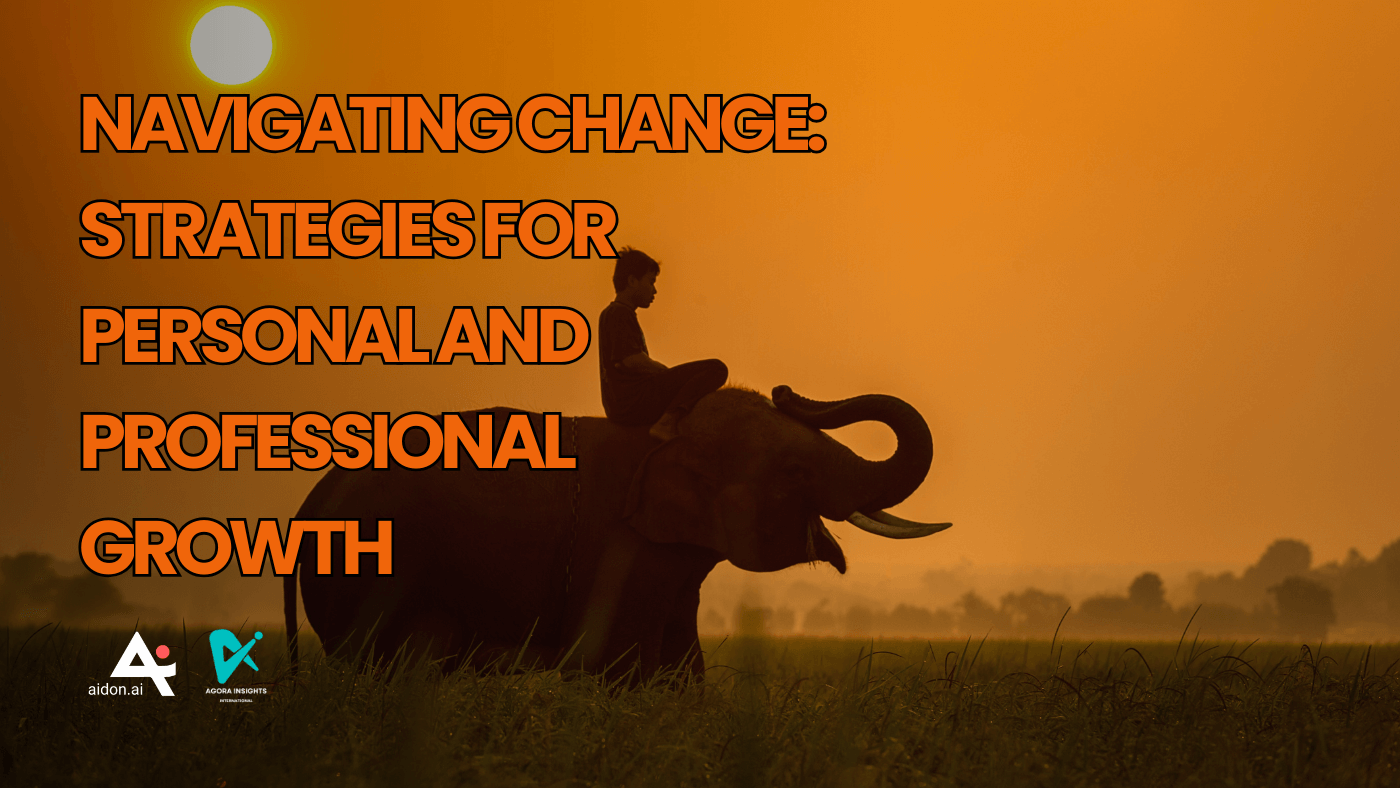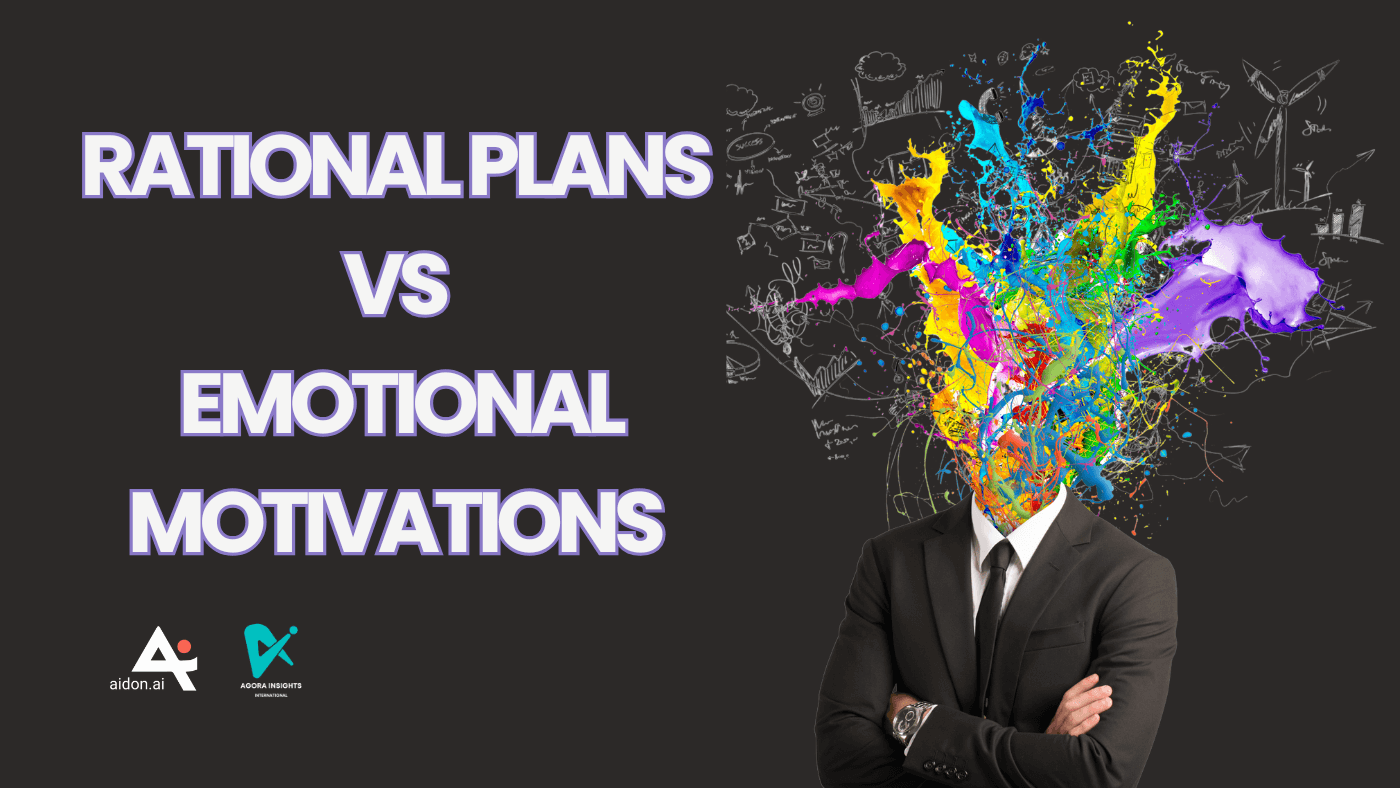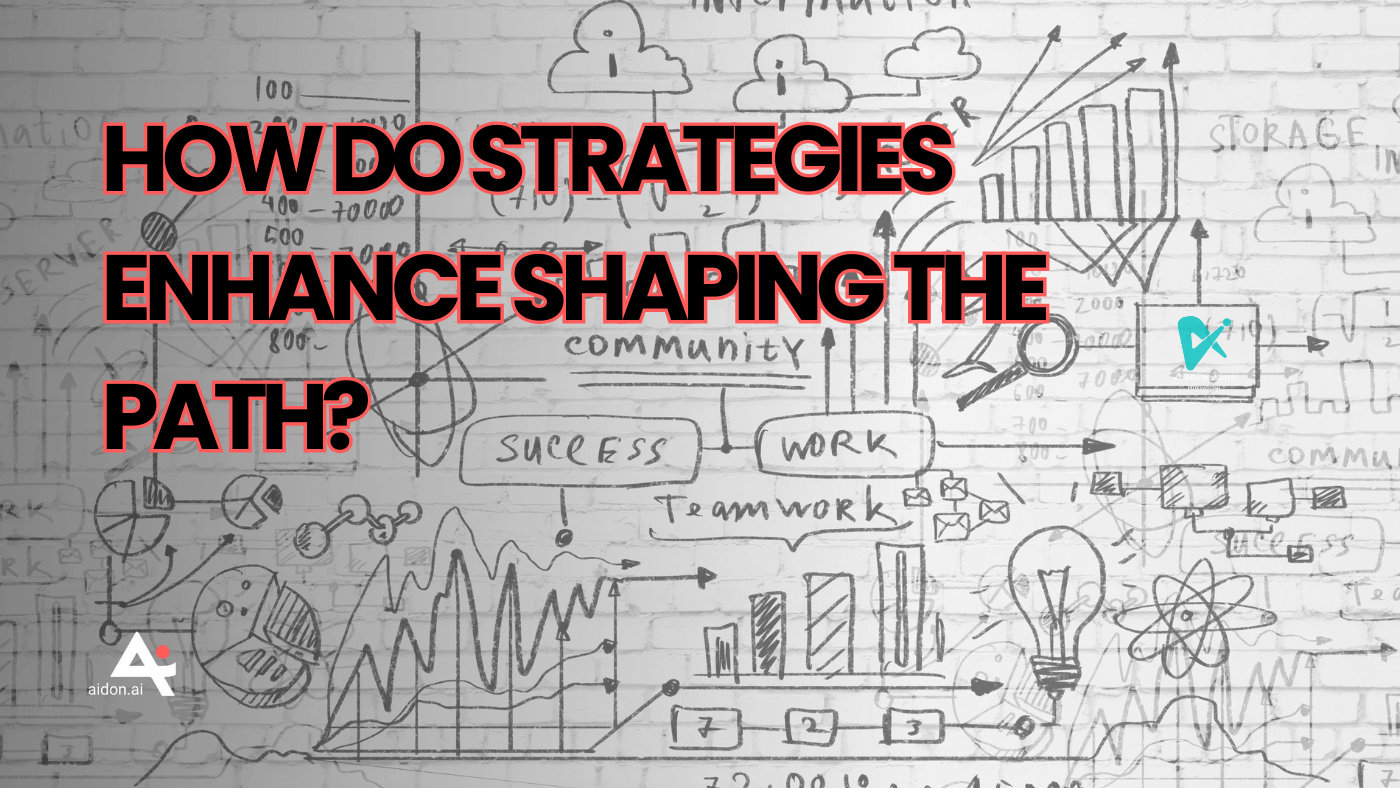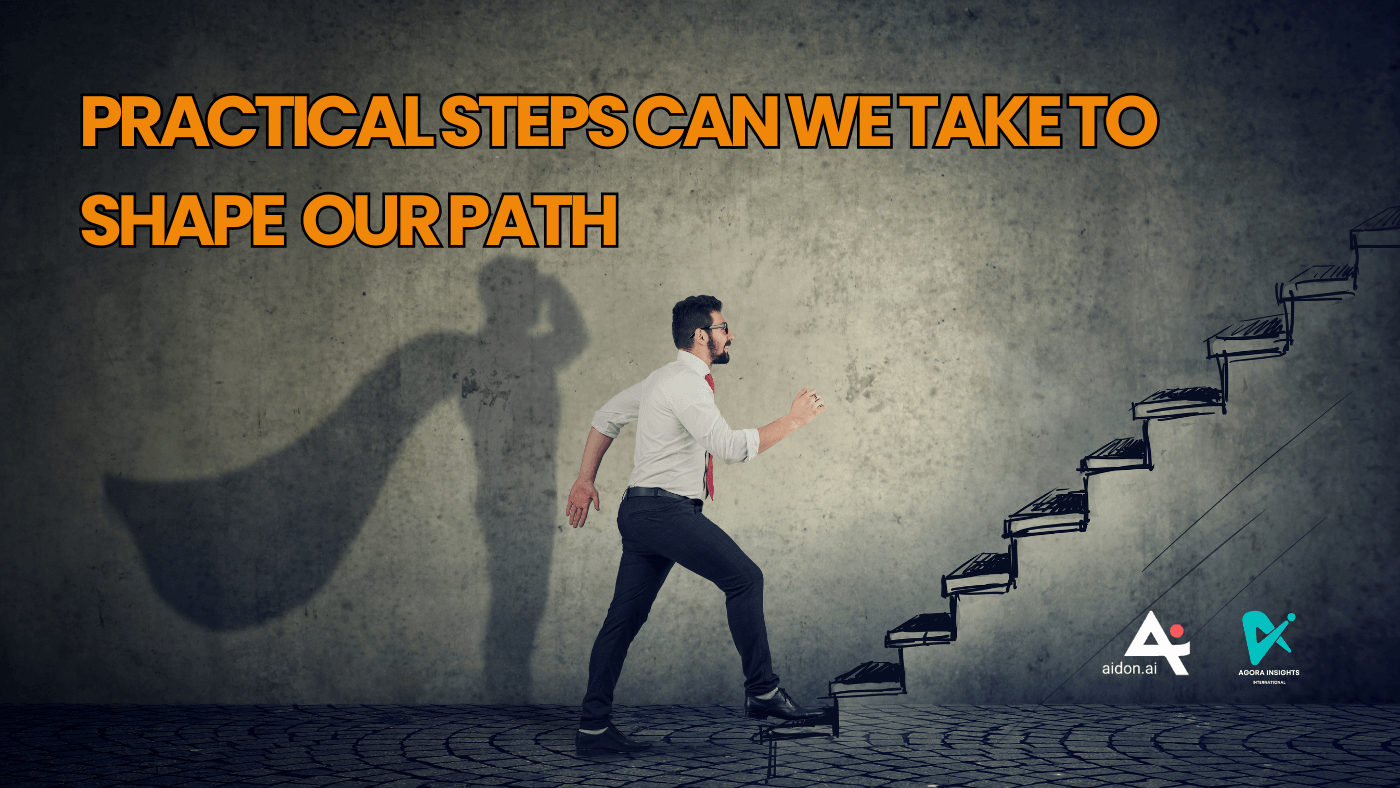
Many years ago, I read the book Switch: How to Change Things When Change Is Hard by Chip and Dan Heath. The insights from this book resonated with me, influencing my approach to managing change in various aspects of life. Recently, I co-hosted the "Clarity" session in the AI Business Catalyst series and wrote an associated blog post where I reflected on Switch. Today, I would like to revisit the themes of this book and discuss strategies for managing the changes we all face in the future, whether they are personal, business-related, or technological. Change is a constant—now what can we do to navigate it effectively?
What Are the Dynamics of Change?
Understanding the dynamics of change is the first step toward managing it successfully. In Switch, the Heath brothers introduce a powerful metaphor to describe the complexities of change: the Rider, the Elephant, and the Path.
- The Rider represents our rational mind—the planner and thinker who likes to analyze and strategize.
- The Elephant symbolizes our emotional mind—the doer and feeler who provides the energy and drive.
- The Path is the environment or situation—the context in which change occurs.
For successful change to happen, these three elements need to align. However, aligning them isn't always straightforward. The Rider might have a clear vision, but without the Elephant's motivation, progress can be slow. Conversely, the Elephant might be eager, but without the Rider's direction, efforts can be unfocused. The Path can either facilitate or hinder the journey, influencing both the Rider and the Elephant.
Why Do Rational Plans and Emotional Motivations Often Conflict?
Aligning the rational mind (the Rider) and the emotional mind (the Elephant) is often challenging because they have different motivations and ways of processing information.
- The Rider seeks understanding and desires to plan every step. However, too much analysis can lead to paralysis.
- The Elephant craves instant gratification and may resist change due to fear or discomfort with the unfamiliar.
When the Rider and the Elephant are not aligned, change becomes difficult. The Rider might recognize the need for change, set goals, and create plans. Yet, without the Elephant's enthusiasm and emotional buy-in, these plans may not come to fruition. The Elephant may resist due to:
- Fear of the Unknown: Change can be intimidating when outcomes are uncertain.
- Comfort with the Status Quo: Familiar routines provide a sense of security.
- Overwhelm: The enormity of change can be paralyzing without clear guidance.
How Can Shaping the Right Path Facilitate Change?
When aligning the Rider and the Elephant proves challenging, altering the environment—the Path—can be a powerful strategy. Shaping the Path involves modifying the context in which change occurs to make the desired behavior easier and more likely to happen. By focusing on the Path, we can influence both the Rider and the Elephant indirectly.
Strategies for Shaping the Path:
Simplify the Environment
How can we make the change straightforward? Simplifying the Path removes obstacles that hinder progress.
- Break Down the Change: Divide the change into manageable steps to prevent overwhelm.
- Provide Clear Instructions: Offer step-by-step guidance that is easy to follow.
- Ensure Accessible Resources: Make sure all necessary tools and information are readily available.
Build Habits Through Action Triggers
What cues can prompt the desired behavior? Establishing triggers in the environment can automate actions, reducing reliance on willpower.
- Use Visual Reminders: Implement sticky notes, calendars, or digital alerts.
- Create Environmental Cues: Place items related to the new behavior in prominent places.
- Integrate into Routines: Attach the new behavior to an existing habit.
Leverage Social Influence
How can we utilize the power of community? Our social environment significantly impacts our behavior.
- Join Supportive Groups: Engage with communities that share similar goals.
- Find Accountability Partners: Partner with someone to encourage mutual progress.
- Model Successful Behaviors: Learn from those who have already made the change.
Adjust Systems and Processes
What organizational changes can support the new behavior? In a business context, modifying systems can facilitate change.
- Automate Desired Actions: Use technology to streamline tasks.
- Redesign Workflows: Align processes with the desired outcomes.
- Update Policies: Implement guidelines that support the change.
Create Immediate Rewards
How can we reinforce the new behavior? Immediate positive feedback encourages repetition.
- Celebrate Small Wins: Recognize progress to motivate continued effort.
- Provide Positive Feedback: Offer encouragement and acknowledgment.
- Offer Tangible Incentives: Use rewards to reinforce commitment.
How Do Strategies Enhance Shaping the Path?
Tiankai Feng provides additional insights that complement the Heath brothers' framework. He emphasizes the importance of strategic alignment in any change initiative, focusing on four key elements:
Excitement and Innovation
How can we identify what is exciting and innovative about the change? This element energizes the Elephant and makes the Path more appealing.
- Highlight New Opportunities: Emphasize the novel aspects of the change.
- Encourage Creative Input: Involve others in brainstorming and problem-solving.
- Set Inspiring Goals: Frame objectives that ignite passion and interest.
Business Value
Why does the change align with strategic goals and deliver value? This clarity satisfies the Rider's need for rationale.
- Define Clear Objectives: Outline specific, measurable targets.
- Link to Organizational Vision: Show how the change supports broader goals.
- Demonstrate Return on Investment: Provide evidence of potential benefits.
Ethical and Legal Compliance
What ethical and legal considerations must we address? Ensuring compliance builds trust and prevents future obstacles.
- Stay Informed on Regulations: Understand relevant laws and guidelines.
- Promote Transparency: Communicate motives and processes openly.
- Establish Ethical Standards: Develop policies that reflect core values.
Feasibility and Capability
Is the change feasible given our current capabilities and resources? Assessing practicality ensures the Path is navigable.
- Evaluate Resources: Identify available tools, finances, and personnel.
- Assess Skills: Determine if training or hiring is necessary.
- Set Realistic Timelines: Create schedules that account for potential challenges.
By integrating these elements into the process of shaping the Path, we create an environment where the desired change is not only possible but also strategically aligned and ethically sound.
Enhancing the Path with Tiankai's Insights:
- Innovative Environments: Design spaces that foster creativity, capturing the Elephant's interest.
- Visible Business Value: Display metrics and progress visibly to satisfy the Rider's need for understanding.
- Ethical Infrastructure: Embed compliance into the environment to build trust.
- Feasible Pathways: Ensure the Path aligns with existing capabilities to prevent discouragement.
How Can We Embrace Change in Various Contexts?
Change affects multiple areas of our lives. By applying the principles of shaping the Path and integrating strategic insights, we can navigate change in personal, business, and technological contexts.
Personal Change
How can we apply these strategies to personal goals?
- Create Supportive Environments: Modify your home or workspace to encourage new habits.
- Build Healthy Habits: Use action triggers to promote behaviors like exercise or healthy eating.
- Seek Social Support: Join groups or find friends with similar goals.
Business Change
What steps can organizations take to facilitate change?
- Redesign Workspaces: Create environments that promote collaboration and innovation.
- Implement Collaborative Tools: Use technology to streamline communication and workflows.
- Align Policies with Goals: Update guidelines to support new initiatives.
Technological Change
How can we adapt to rapid technological advancements?
- Adopt User-Friendly Technologies: Choose tools that are intuitive and accessible.
- Emphasize Continuous Learning: Provide training and development opportunities.
- Stay Agile: Be open to adapting processes as new technologies emerge.
By tailoring the Path to suit different contexts, we enable smoother transitions and encourage lasting change.
What Practical Steps Can We Take to Shape the Path Effectively?
Taking actionable steps ensures that the concepts of shaping the Path translate into real-world results.
Conduct an Environmental Audit
- Assess Current Conditions: Identify factors that support or hinder change.
- Plan Modifications: Decide what changes to the environment are needed.
Engage Stakeholders
- Collaborate: Involve others in planning and implementing changes.
- Collect Feedback: Listen to concerns and suggestions.
Pilot Changes
- Test on a Small Scale: Implement changes with a small group first.
- Gather Data: Monitor outcomes and make adjustments.
Communicate Clearly
- Explain the Why: Ensure everyone understands the reasons behind changes.
- Provide Updates: Keep communication lines open throughout the process.
Monitor and Adjust
- Stay Flexible: Be willing to modify strategies as needed.
- Celebrate Progress: Recognize achievements to maintain momentum.
Final Thoughts
Change is a constant in our lives, and how we respond to it shapes our future. By understanding the interplay between our rational and emotional minds and recognizing the power of our environment, we can develop effective strategies to navigate change.
Drawing inspiration from Switch and integrating Tiankai Feng's strategic insights, we can align the Rider, motivate the Elephant, and shape the Path to create a conducive environment for change. Whether in our personal lives, businesses, or adapting to technological advancements, these principles provide a roadmap for success.
Change doesn't have to be daunting—it can be an opportunity for growth, innovation, and positive transformation. By proactively shaping the Path, we make the journey smoother for ourselves and those around us, turning the constant of change into a catalyst for progress.
To get biweekly videos and interviews from leaders around the world, why don't you try connecting to our Architecting AI for Business Newsletter
Want to access more content, connecting with the Inner Circle is recommended
Just a reminder that Agora Insights and now Aidon.ai open up a world of learning and AI-Assisted Solutions for Business Architects, Analysts, Strategists, and Business Leaders.
To watch more videos, visit YouTube.
Interested in business architecture and business analysis certification, corporate and AI training?
Go to our website www.agorainsights.com
Connect with Deirdre Caren on LinkedIn
Post sponsored by Agora Insights Ltd








Post a Comment